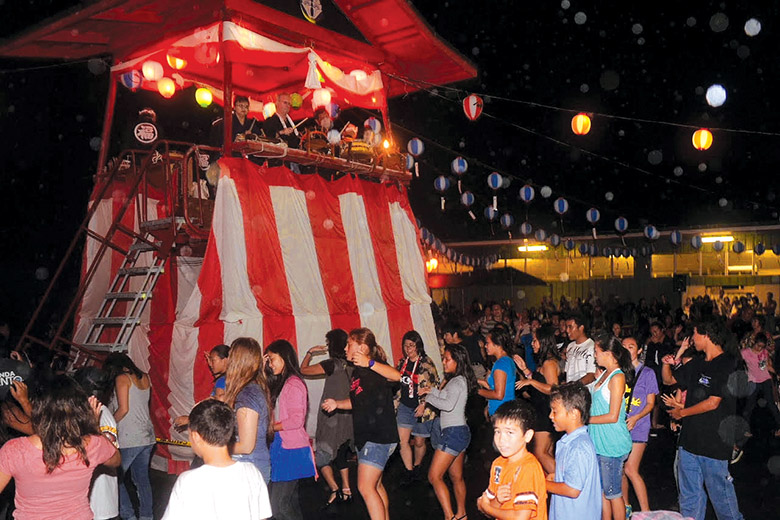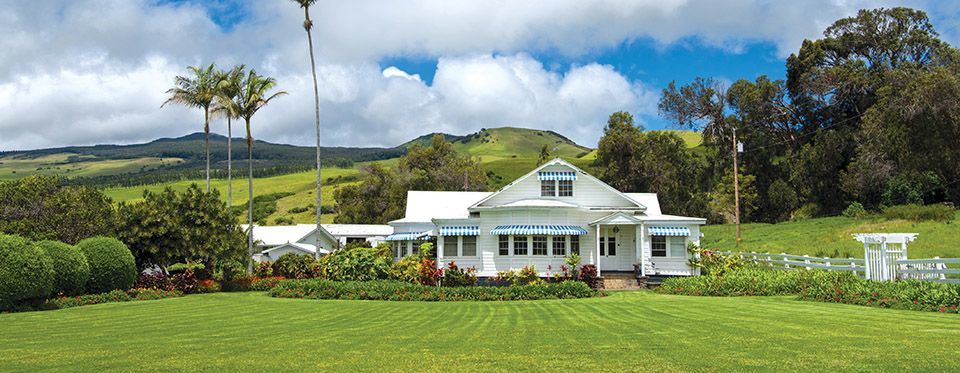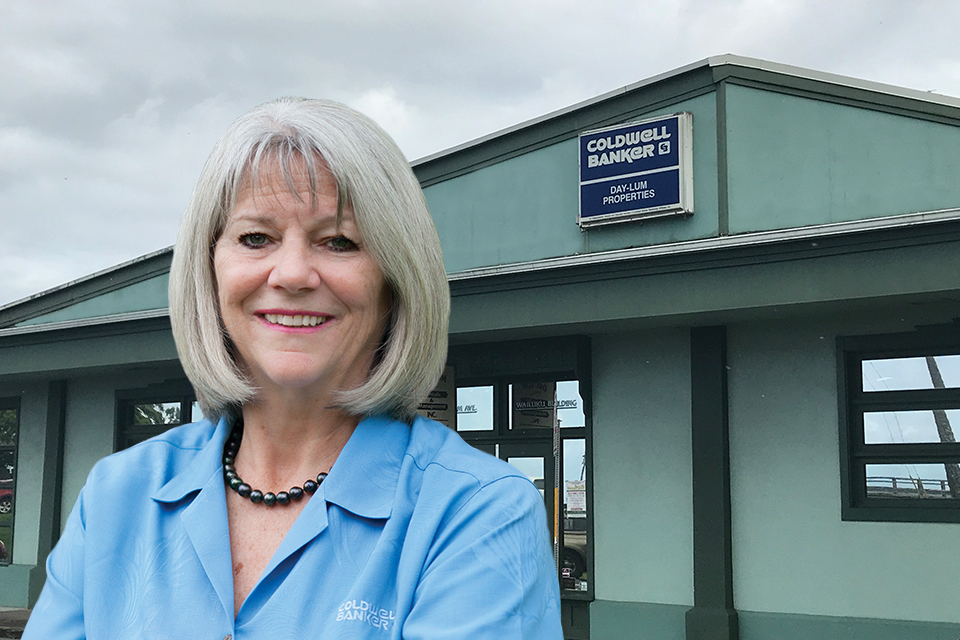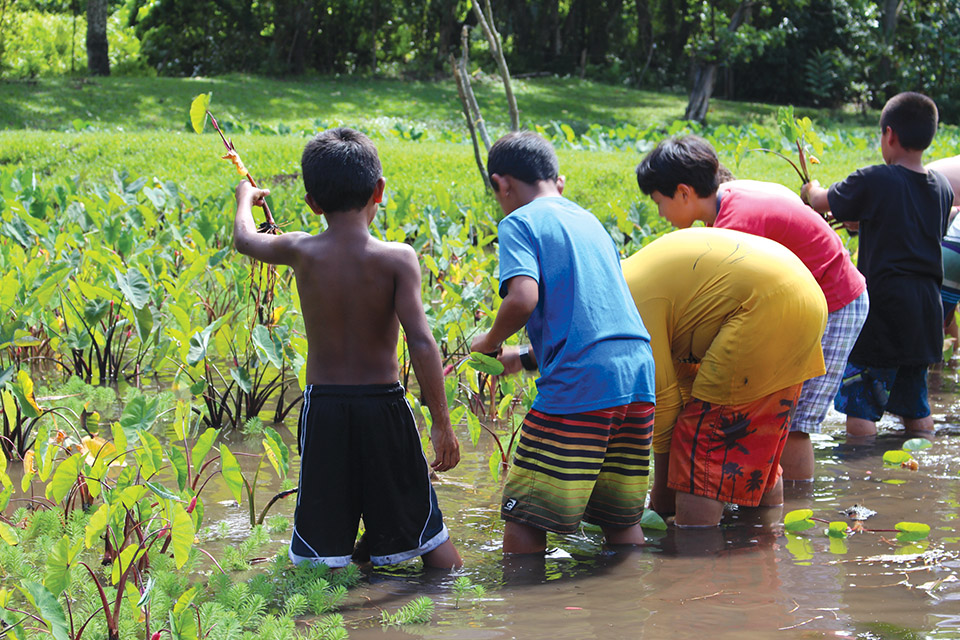
Ahupua’a: Living Aloha
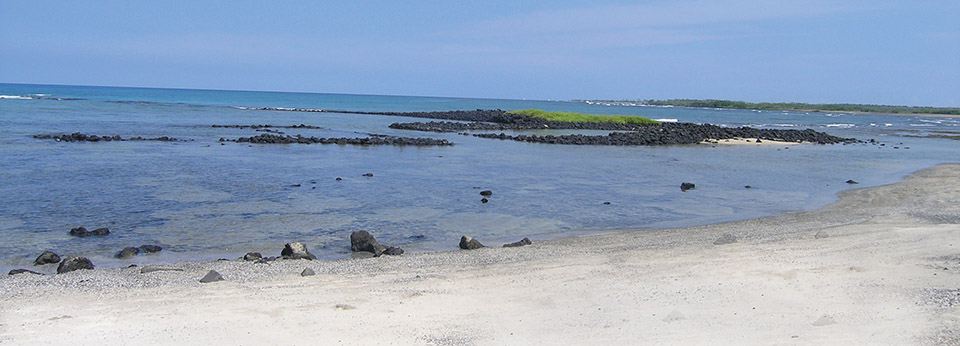
By Jan Wizinowich
Beyond canoe plants and animals, the first voyagers to these shores brought the spirit of ahupuaʽa, a sense that they were of the land. On the most basic physical level, the ahupuaʽa is a dedicated land division that ensured a sustainable livelihood for the inhabitants; however, it is also an enduring testament to the canoe culture that propelled the first Polynesians to these shores. Successful voyagers had a keen understanding and a spiritual connection to the natural forces that ruled their world, honed through generations of careful observation and a community of people bound together in a single purpose.
Navigating the Land
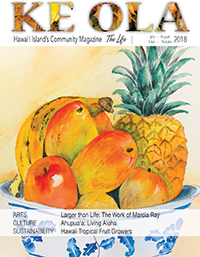
To be of the land, you must know that land. Upon their arrival, the voyagers began observing and noting all the natural phenomena surrounding them. This became their new culture. “The natural cycles within the ahupua‘a were also the foundation of the Hawaiian family, social, political, and religious structure, and it can be said that the Hawaiian culture itself is rooted in the land.” (Maly, p. 7)
On the ocean, the voyagers navigated by the celestial realm. They were aware of wind, clouds, and rain cycles along with the natural world of sea life and bird life. On land, the navigators noted the moon phases, tides, and currents in relationship to planting and fishing cycles.
The Polynesians started along the shoreline of this verdant island, eventually moving inland up streams to discover and develop mauka (mountain side) resources. Some plants they recognized, others were new, but soon ways were found to make use of them. Canoes for return voyages were constructed from koa logs harvested from upcountry groves, hollowed out using adze from mountain top quarries and lashed together using olonā, a fiber only found on Hawaiʽi Island.
As the population grew, cultivated land extended mauka, creating long sections of land, later termed ahupuaʽa. “The ahupua‘a within which the native Hawaiians lived represented land divisions that were complete ecological and economic production systems. The boundaries of the ahupua‘a were generally defined by cycles and patterns of natural resources that extended from the mountainous zone, or peaks, to the ocean fisheries.” (Maly, p. 7)
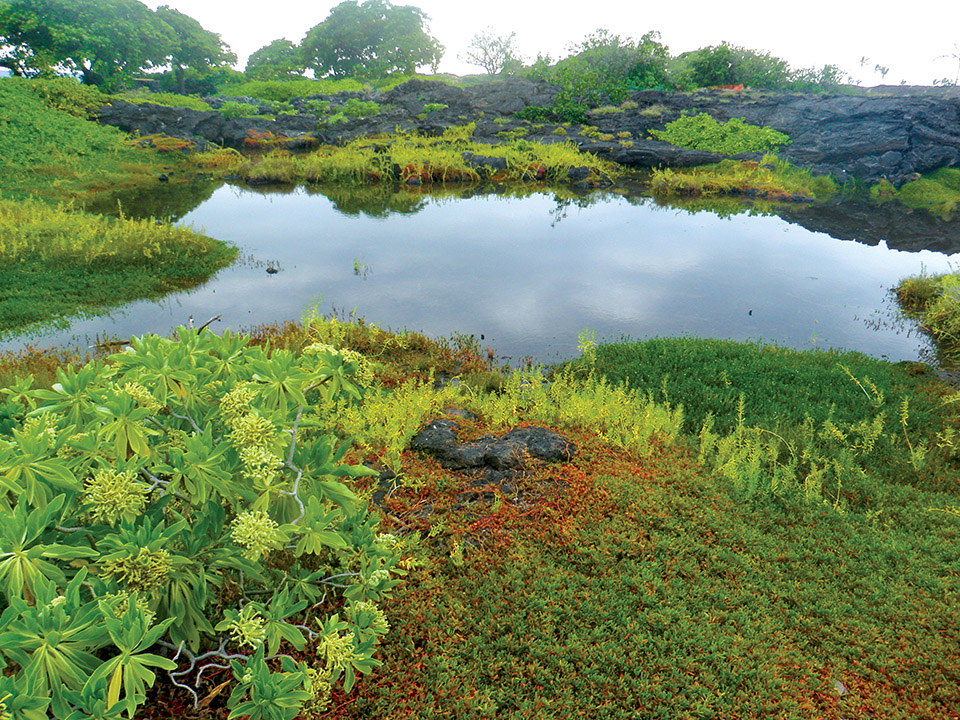
photo courtesy of Nahaku Kalei
Water, a primary resource and considered sacred, was found in abundance in streams and springs. The early settlers discovered ways to channel and share this resource within the ahupuaʽa by creating ʽauwai or irrigation ditches and aqueducts that made irrigation possible for numerous loʽi (irrigated terraces). “Water, then, like sunlight, as a source of life to land and man, was the possession of no man, even the ali‘i nui or mō‘ī. The right to use it depended entirely upon the use of it.” (Handy, p.63)
Keen observation led to connections between phenomena happening in different regions of the ahupuaʽa. “When they saw something happen in the mountains in their own ahupua‘a, they related it to what was happening in the ocean. Thatʻs how we have these great sayings like ‘When the wiliwili blooms the shark bites’ or ‘When the sugarcane tassles, the time is right to gather the octopus’. The ahupua‘a really made the foundation for culture and traditions,” explained Waimea cultural practitioner, Micah Kamohoali‘i.
The ʽOhana Community
The ahupuaʽa within the districts of Kona, Kohala, Hāmākua, Hilo, Puna and Kaʽū, were generally, yet not always, sections of land that ran from mountain to sea, divided into kai (sea), kula (fields/plains), and uka (upland/mountain) sections, each contributing to sustain the residents within. While technically considered a tax district, in origin and spirit it was a connected community of people, a weaving of ʽohana (family) groupings who cultivated the resources of their particular ʽili (land section).
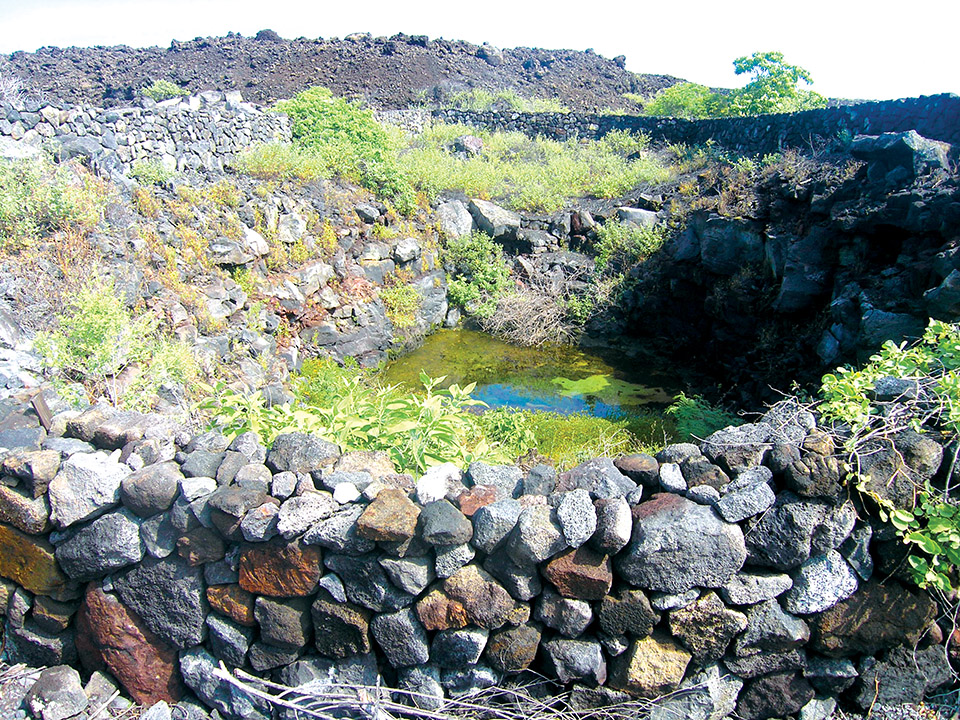
Handy describes the relationships within the ahupuaʽa as “neighborly interdependence,” where goods and services were shared. “Between households within the ‘ohana there was constant sharing and exchange of foods and of utilitarian articles and also of services, not in barter but as voluntary (though decidedly obligatory) giving.” (Pukui p.5–6)
Within this system, ʽohana living inland who could supply taro, bananas, wauke (bark for tapa), olonā for fiber and lashing, gifted supplies to the coastal area ʽohana and in return received fish, gourds, coconuts, and other resources.
“My dad’s family is from Kona and they all lived in the ahupuaʽa system. My dad’s grandma was born in 1908 and she would tell us that the families that lived up in the mountains would bring all their birds, berries and all the things they gathered in the mountains down to the middle of the ahupua‘a and the ones on the bottom brought their fish and they traded things over and over. So she said that the families on the mountain always had fish for dinner,” said Micah.
Just as with a successful canoe voyage, the success of the ahupuaʽa depended on each person fulfilling their kuleana or responsibility. The system of “sharing between chief and tenant was comprehensive and reciprocal in benefits. It also assured subsistence shares in food, fish, firewood, house timbers, thatch, and the like, to the lesser landholder—the planter.” (Handy, p. 48)

In later settlement years, this also meant producing enough food and other supplies to fulfill the tax levied by the aliʽi ai ahupuaʽa (chief who eats the ahupuaʽa). This was determined by the konohiki, who was a kind of an overseer appointed by the aliʽi and usually an extended family member.
The success of the early settlement system and the later designated ahupuaʽa was based on faith. Faith that everyone would take care of their kuleana, faith that the aliʽi would be fair and provide for the well-being of the ʽohana and most importantly, faith in the unseen forces that could determine feast or famine.
Spirit and the Land
The Polynesians brought a spiritual practice firmly planted in the land and connected to the natural world. They maintained that connection through chant and practices which honored the gods and ‘aumakua (family or personal gods) who represented various aspects of the natural world. “Indeed, the spiritual beliefs, cultural practices, and cultural landscape of the Hawaiian people, were intricately bound to the natural landscape of the islands.” (Maly, p. 5)
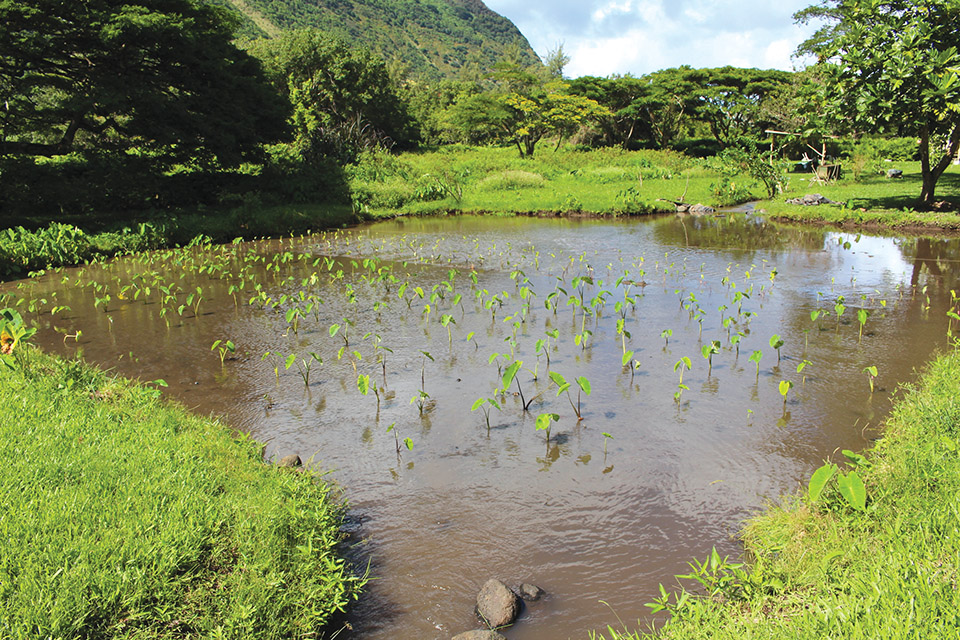
photo courtesy of Mahina Patterson
The Hawaiians saw that. “The ocean, the underworld of volcanism, the terrain, and the heavens all harboured and brought forth elemental Persons embodying natural forces or phenomena and generic forms of life.” (Pukui, p. 27)
Early spiritual practices were based “upon simpler local clan and tribal subsistence economics having their roots in planting rituals and worship carried on by individuals and families of Kane and Lono as progenitors and waterers, respectively, of taro and sweet potato.” (Handy p. 351)
Later the aliʽi were the recipient of hoʽokupu (gifts), which literally means to cause to grow, in the belief “that the high chief was the scion and living embodiment of the akua upon whom fertility depended, this contribution or levy actually was a ceremonial gift (mohai) of the fruits of land and labor to the deities who were believed to be the source of nature’s productivity.” (Handy, p. 351)
The boundary markings of the ahupuaʽa (ahu–altar; puaʽa–pig), where offerings were made during the Makahiki season, were a tribute to Lono, whose main form was closely connected to agriculture, often in the form of dark thunderous clouds that bring the necessary winter rains.
The major gods of Hawaiʽi Island were Kāne, Kū, Kanaloa, Lono and Pele, however the primary god of worship depended on family lineage. Ahu (altar) and heiau (place of worship) can be found in any region of the ahupuaʽa to honor an event that happened there, a special feature or a unique resource.
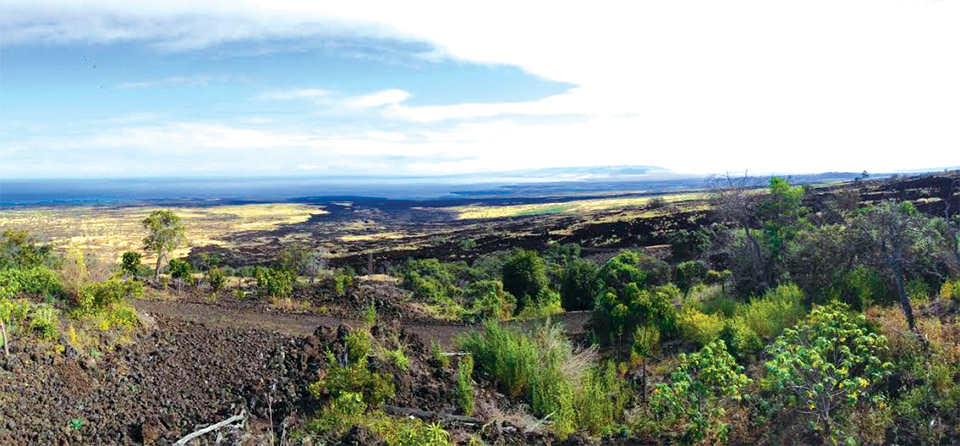
“There was one ahupuaʽa in Kona that had a spring and all the other ahupua‘a around it were dry so they built an ahu there to honor the god Kāne because it was Kāne who came and plunged his ‘ō‘ō (digging stick) in and started this spring,” said Micah.
Harvest was an especially important time for tribute. “It was a time to put an offering on the ahu to thank their ancestors, ancestral guardians, their gods and ‘aumakua for providing their life and providing the miraculous things that were happening in their ahupua‘a,” said Micah.
There was a constant awareness of the need to acknowledge the gifts of the greater powers that made their lives possible. “They were in tune with everything around them and with everything they did; they honored their ancestors and their ‘aumakua. If they had a big harvest, it was because the ‘aumakua took care of them,” said Micah.
Although since the Great Mahele (land division) in 1848, the old system of land use has suffered; the spirit of ahupuaʽa lives on in the many hearts whose efforts today are contributing to our sustainable island. ❖
Sources cited:
Native Planter in Old Hawaii: Their Life, Lore, and Environment. Handy, E.S. Craighill and Elizabeth Green.
Mauna Kea – Kuahiwi Ku Ha‘o I Ka Mālie. Maly, Kepā.
The Polynesian Family System in Ka‘u, Hawai‘i. Pukui, Mary Kawena.
Mahalo Kings’ Shops – Culture Story Sponsor
